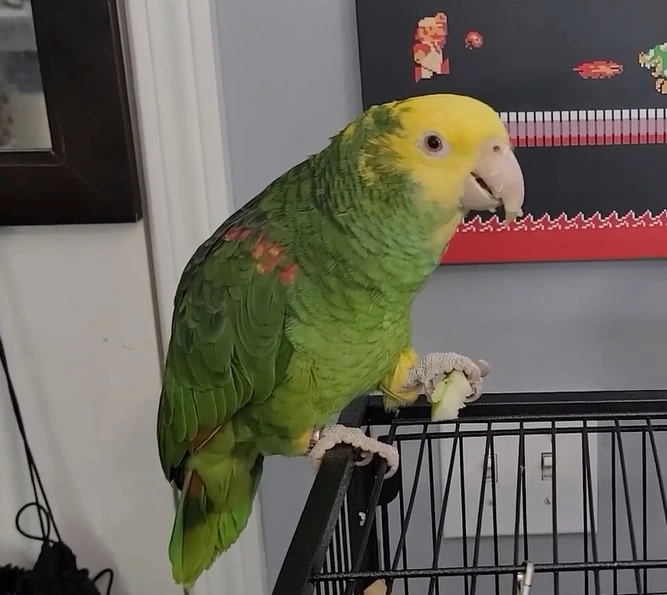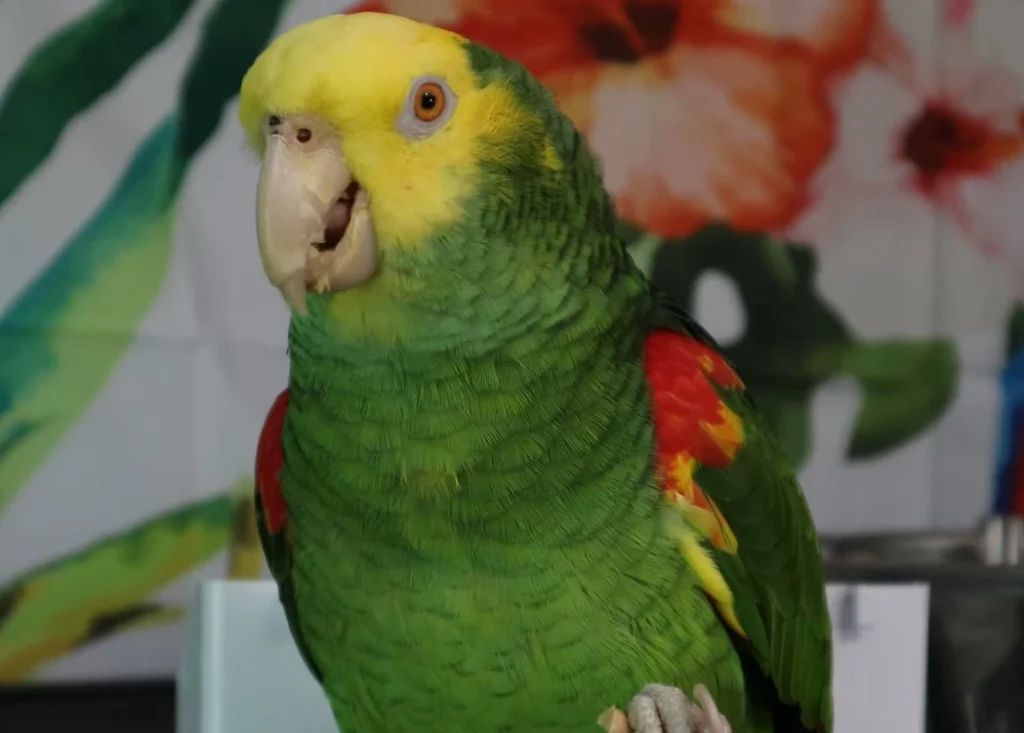Double Yellow Head Amazon Parrot Body Language.
The Double Yellow Head Amazon parrot is a fascinating bird that makes great pets! Many want to add an outgoing, loud and a singer bird to their flock so Double Yellow Head Amazon parrot is an automatic choice. They love to sing and dance. They have another good reputation of getting along with other amazon parrots also.
Unlike other birds, Double Yellow Head Amazons frequently use body language to communicate with their humans. You can usually predict their mood just by looking at them. They are popularly known as “moody” in the pet bird community.

Double Yellow Head Amazons never bluff about their feelings. And they also have “opinions” about their feelings. If they are in an off mood, and you continue to ignore it, then there is a high chance of bite.
Lets see Double Yellow Head Amazon Parrot body languages.
1. Wing flapping accompanied by squawking
Amazons stand upright, and flapping wings at the caregiver, it generally means: you are not paying enough attention to your bird so it is trying to get your attention.
2. Recoil in horror accompanied by growling
Most prominent body language. Amazons will recoil in horror, growl if it is panicked or feared of something/someone. In that case immediately remove the new object or keep a safe distance with the bird.
They will either fly away or might attack the object or person it is fearing. Amazons do this most of the time to something new or a new person. Give some time to get used to new things or people. Most of the time they change their mind to “that’s my property” or “s/he is my buddy”.
3. Displacement/lunge
When Amazons lunge, just back away from them, and save yourself from nasty bite. They will sure bite crap out of you if you continue to do whatever you are doing and your bird is lunging.

4. Wings spread, making themselves look bigger, Standing straight up
Amazons take this stance to hold their ground. It is not an entirely attacking mode. But it is safer to keep distance to avoid biting. If you are not looking aggressive they will not be either. They will turn in slow circles with their wings open.
5. Head down and/or head feathers raised
You are allowed to scratch their head.
6. Wing flipping.
This happens when they are tired or annoyed by something (might be you also). They will ignore that thing or you.
7. Wing flipping accompanied by eye pinning
If your bird is annoyed or tired of something or you and you/something continue to bother, it will flip him/her wings with pinning eyes. It means s/he is getting angry and eventually bite. Just leave him/her alone, everyone should be fine.
8. One leg up
Your bird is calm, content and relaxed. Don’t try to disturb him/her.
9. Standing straight up, foot up
You can pick your bird now.
10. Leaning forward, wings shaking with a slight rapid motion.
Ready to fly (to you). Your bird wants your attention. Just pick him/her or s/he will fly to you.
11. Stuck-up in a straight up stance, eyes pinning, tail flared, with whistling/chattering, and making silly noises
Happy birdie! S/he wants to interact with you. Don’t ignore him/her now unless you want an unhappy bird. Dance, sing, talk to your bird.
Although your bird is in a play mood, keep a safe distance and don’t breach the play zone. Amazons play with their toys by attacking them. Amazons bite when they are excited too, not because s/he hates you. They are just like 2y.o. toddlers.
Just let her/him calm down, then pick your bird. Just don’t disturb in the middle of playing.

12. Strutting around in a hunched over stance, head down, beak open, eyes pinning, tail flared, wings held up, making territorial noises
Many mistake this behavior with a happy bird who wants to interact with you. Happy amazon will not hunch over, head down and keep wings up. They are just trying to defend their territory. Do not get close to them unless you want to lose one of your fingers.
13. Strutting and displaying which ended with wings quivering.
It is better to back up if your bird is strutting and displaying. If this progresses to wings quivering, this means, your bird is ready to attack your face.
14. What is that look
Typically they give this look to new object. It does not mean that s/he wants that. They are just curious.
Beside these signs, there may be another long list as every individual bird has unique behavior. Just watch them closely and don’t ignore them for a long time. You will surely find a unique expression of your feathered baby.
Above signs aren’t just applicable for Double Yellow Head Amazons but also other Amazon parrots also. As Double Yellow Head Amazons are one of the most popular among Amazon parrots, thus I took the opportunity to describe their body languages.
Happy bird keeping!
